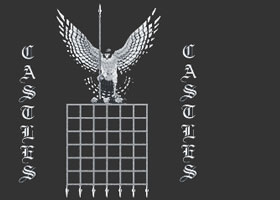 |
Medieval Crossbow |
| The History of Medieval Crossbow | |||
| The Crossbow was, however, a very useful weapon which could be used by the young, the old and the infirm! The crossbow was used throughout the Middle Ages. Richard the Lionheart's army had both crossbows and longbows. King Richard died as a result of gangrene after being shot by a crossbow bolt at Chalus-Charbrol near Limousin, France, on 26 March 1199. The threat of Mercenaries flooding England from the continent, willing to fight for the highest bidder, led to one of the clauses in the Magna Carta (1215) seeking to banish all foreign crossbowmen. All attempts to apply a weapon ban on crossbows failed and all such requests were ignored... |
Medieval CrossbowMedieval Crossbow
Description of the Medieval Crossbow
The crossbow bolt, unlike a light flying arrow, was short with a deadly point. The crossbow range was 350 – 400 yards but could only be shot at a rate of 2 bolts per minute. The crossbow was easy to use, requiring minimal training and required little strength to operate. A maker of bows, arrows, and other archery goods was called an Artillator. Medieval Crossbowmen
The main disadvantages of the Medieval crossbow were the expense and time to manufacture and the slow firing rate. From the crossbowman's point of view its main disadvantage was his vulnerability whilst reloading the crossbow. He needed protection and tall shields called pavises were developed. |
The Pavise - the Shield of the Crossbow men The Medieval Crossbow is Banned! " As soon as peace is restored, we will banish from the kingdom all foreign born knights, crossbow men, sergeants and mercenary soldiers who have come with horses and arms to the kingdom's hurt." In 1139 Pope Innocent II and the Church of the Lateran Council issued a judgement against the use of the crossbow by Christians against Christians. The Medieval crossbow was referred to as "the deadly art, hated by God, of crossbowmen..." The Medieval crossbow was viewed as an abomination but the weapon bans failed to stop the rise of crossbows, they were simply ignored, and the crossbow continued to remain a favoured weapon across both Europe and England. The Medieval Crossbow is used for Sport Medieval Crossbow - The Crossbow and the Longbow Medieval Crossbow |
Medieval Crossbow | |||
Medieval Weapons
|
| © March 2018 SiteSeen Ltd. | Cookies Policy | Privacy Statement | By Linda Alchin | ||
